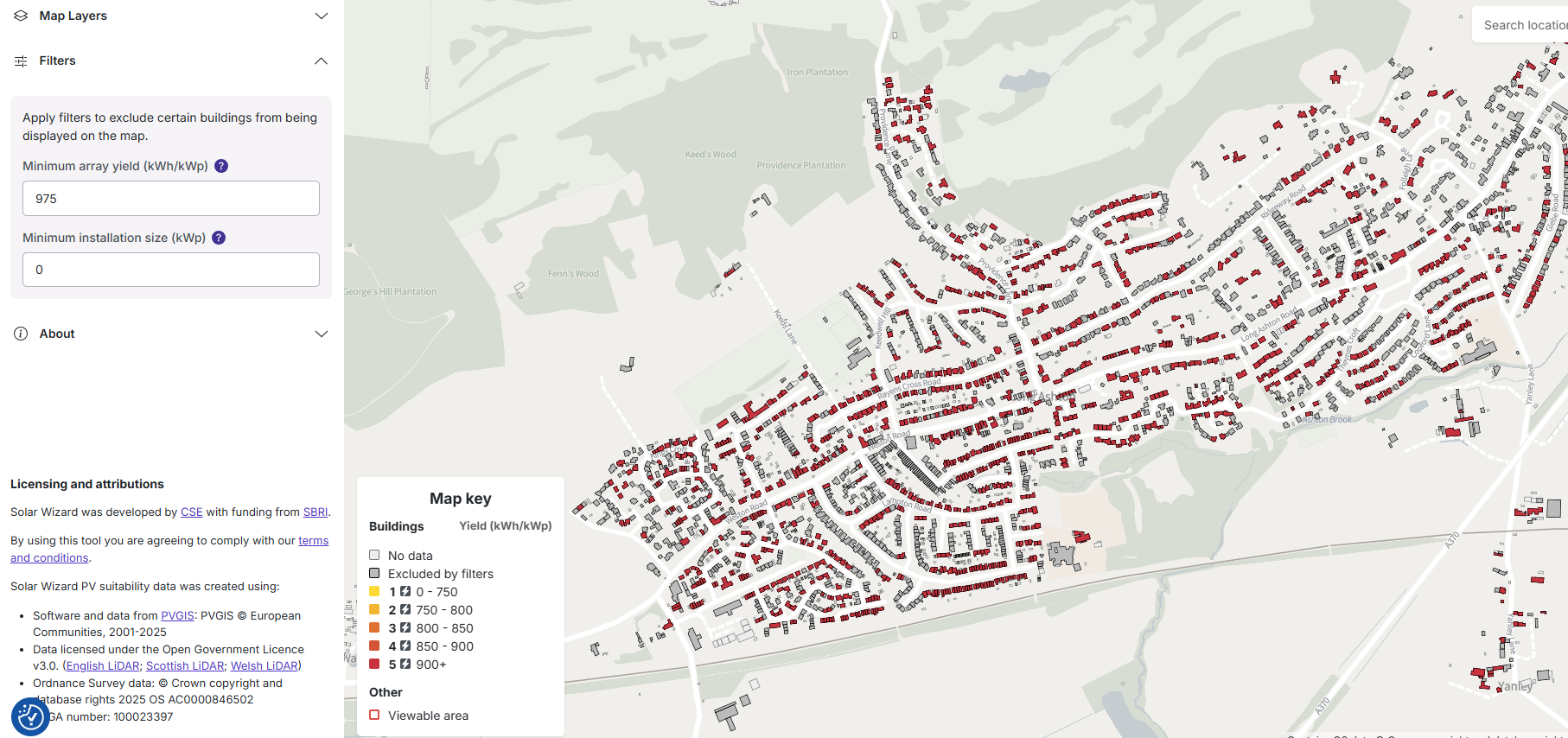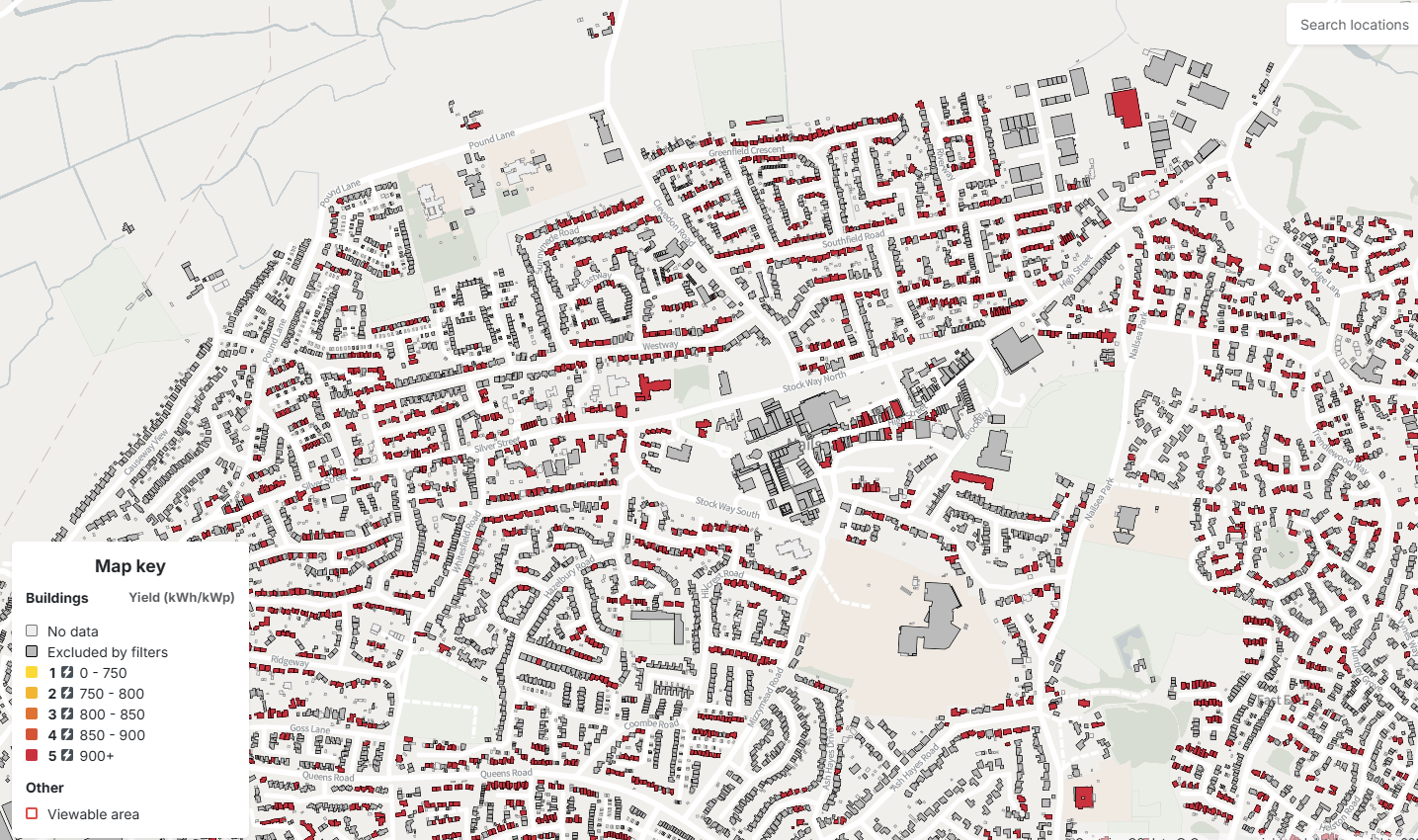Tailoring messages to increase local interest in solar panels
Through our work with communities, we understand that there isn’t a one-size-fits-all approach to tackling climate change. There are lots of reasons why someone is interested in the transition to net zero, and tailoring messages to align with people’s beliefs can be a successful way to create positive support for local climate plans.
North Somerset Council wanted to boost the uptake of home solar panel installations. CSE put together a communications campaign to engage residents based on their motivations and attitudes towards renewable energy. This project was funded by the South West Net Zero Hub, which is hosted by the West of England Mayoral Combined Authority.
Creating a communication strategy
North Somerset Council are part of the Innovate UK Net Zero Living programme, Mission Net Zero (MNZ). As part of this programme, CSE developed two digital tools to help communities make net zero plans. We combined the information from these tools to inform the communication strategies around solar panels:
- Solar Wizard. This tool, developed by CSE, identified streets with high solar potential in North Somerset.
- Britain Talks Climate (BTC). With Climate Outreach, CSE created a mapping service that combines in-depth research from Climate Outreach, segmentation from More in Common’s Core Beliefs model, and local demographic data to determine who lives locally and what they’re motivated by.
The overall message was to convey the benefits of solar panels to the community. All materials included information about Solar Together, a scheme run by iChoosr and backed by West of England Combined Authority. Householders register their interest to have solar panels installed and the economies of scale across multiple homes means suppliers can bulk-buy solar panels, making installations cheaper for each individual homeowner. The campaign’s success was ultimately measured by how many people signed up to the scheme that was running at the time of the communications campaign.
Targeting streets using in-depth data
We started to build up our understanding of North Somerset using the data provided by the tools alongside local knowledge from workshops with the council. This allowed us to refine a long list of potential areas down to five test streets split across Nailsea and Long Ashton.
In the end, five streets were chosen based on certain factors:
- Solar suitability was important, as we wanted to target homes that would benefit from installing solar panels. If streets had low suitability or had a high percentage of homes with solar panels already installed, then they weren’t considered for this campaign.
- Household tenure. The data from Britain Talks Climate mapping allowed us to explore demographic data, such as home ownership, that might influence someone’s decision to install solar panels. Homeowners can more easily make decisions about their home than people who are renting.
- Average household income. We targeted homes with an average household income of over £31,000. Households earning under that threshold are eligible for other funding and schemes, whereas Solar Together is self-funded.
- A range of ‘community assets.’ We gained local insight through workshops with representatives from North Somerset Council. While data is helpful to provide an overview, it’s not a substitute for speaking with the community. Through these workshops we identified potential ‘community assets’ such as local volunteer groups, social clubs and energy champions. These could provide helpful networks to deliver positive solar messages.

Building tailored messages
BTC’s Seven British Segments, based on More in Common’s Core Beliefs model, are seven distinct profiles founded on people’s beliefs, motivations and attitudes towards climate change.
Through our research, we gained an understanding of which segments live in the five test streets. Combining that with the insight we had acquired from local representatives gave us the framework for our messaging.
Nailsea – messages for Loyal Nationals
Loyal Nationals are the dominant segment in the streets identified for Nailsea, and they make up 23% of the British public. Loyal Nationals are highly concerned about climate change, are particularly motivated by fairness and are untrusting of elites and activists. They tend to lean left economically but right on social issues.
The average age of this segment leans older, with a low or medium level education, and they’re the lowest earners of the segments. That said, the average household income across the test streets is above £45,000 a year.
The biggest worries around climate change for Loyal Nationals are:
- Causing bills to rise for themselves and others.
- Harming nature and the environment.
- Increasing flooding risks.
When tailoring our messages, we focused on:
- Messages on fairness and local action.
- Narratives around nature and protecting the environment.
- The local connection and benefits of energy production.
And specifically, when talking about the benefits of solar panels, we highlighted that solar panels can:
- Increase your energy independence.
- Create more locally produced and consumed energy.
- Reduce the need for large solar farms.
Long Ashton – messages for Established Liberals
For Long Ashton, the dominant segment is Established Liberals.
Established Liberals make up 14% of the British public and fall in the middle of the seven segments with their concerns about climate change. They tend to have a more global outlook and are proud of cultural diversity, freedom and equality. They’re the least likely segment to agree that the UK is getting worse. Like Loyal Nationals, they care deeply about their local natural environment.
They are found predominantly in more rural areas and are high earners. They tend to hold right-leaning views about the economy but lean more to the left around social and cultural issues.
The biggest worries around climate change for Established Liberals are:
- Harming nature and wildlife.
- Increasing flooding risks.
- Causing bills to rise for themselves and others.
When tailoring our messages, we focused on:
- The UK playing our part towards overall decarbonisation.
- Protecting nature and the environment.
- Keeping the benefits of energy production local.
And specifically, when talking about the benefits of solar panels, we highlighted that solar panels can:
- Create more locally produced and consumed energy.
- Keep the benefits and savings of energy production local.
- Support the UK’s journey to a cleaner energy system.
Delivering the campaign
We created a layered communications campaign over one month, which included social media, leaflets and door knocking to engage with people in a variety of ways.
Communications were tailored by:
- Including street names to make messages feel more personal.
- Using images of the streets generated by Solar Wizard and BTC mapping tools. These images clearly demonstrate the high solar potential of each street and individual homes.
- Switching out which solar panel benefits to highlight based on BTC’s seven segments.
- Trialling different ‘messengers’ to see who is a trusted representative in each area.
We then compared the results to a broader, less tailored campaign across five other streets in North Somerset. These were closely matched to our test streets to understand the impact of our engagement approach. This campaign included social media posts and leafleting targeted to the streets that highlighted different solar panel benefits.
The results from the tailored communications campaign
Social media statistics indicated that tailored messaging was more effective in getting people’s attention, generating a 47% increase in link clicks compared to the broader campaign.
We learnt that leafleting had no real effect – but door knocking, particularly with a trusted local messenger, did seem to work by engaging people in conversations. While many expressed an interest in the scheme, some shared concern about payback periods and declared disinterest. This insight can be used to deepen our understanding of these areas and inform our future communications.
38 people signed up to Solar Together during the campaign, one through door knocking and the rest through social media. The campaign ran for just over one month, and with a longer engagement period, we would expect sign-ups to increase. Solar panels are a high-cost purchase, so people’s decision-making process may have also exceeded the campaign timeframe.
Although these numbers are how we chose to measure success, it’s clear from other metrics – social media statistics and conversations had – that the campaign had a positive influence on solar panel interest.
Key recommendations and next steps
The main takeaway is that it’s important to tailor messages to generate engagement. By understanding your target audience and their motivations, you can develop richer communications to spark people’s interests.
Here’s what worked well:
- Ensuring enough time to fully plan and implement an engagement plan.
- Adopting a wider engagement approach using social media and following this up with on the ground in-person engagement using trusted messengers. This also ensures you don’t miss people who may not use social media.
- Linking messaging to issues people face – data is most useful when combined with local knowledge.
- Targeting a large enough area so that you feel confident you can understand which messaging approaches and which messengers work best from the data you gather.
- Applying a multilayered and long-term approach to marketing and engagement. The best results occur from multiple engagement methods over a prolonged period.
- Considering who the best messenger is for your area. Generally, the best messenger is the local authority (we had most signups for Solar Together due to local authorities backing the scheme). However, the benefit of using BTC’s seven segments is that you can identify areas that might not trust the local council as a messenger and engage with them in a different way.
These learnings can be carried forward to other communication campaigns to engage the public more effectively on climate change.
Download the full report
We’ve put together a report of all of our findings. If you’re interested in collaborating with CSE on a similar project, please get in touch.



